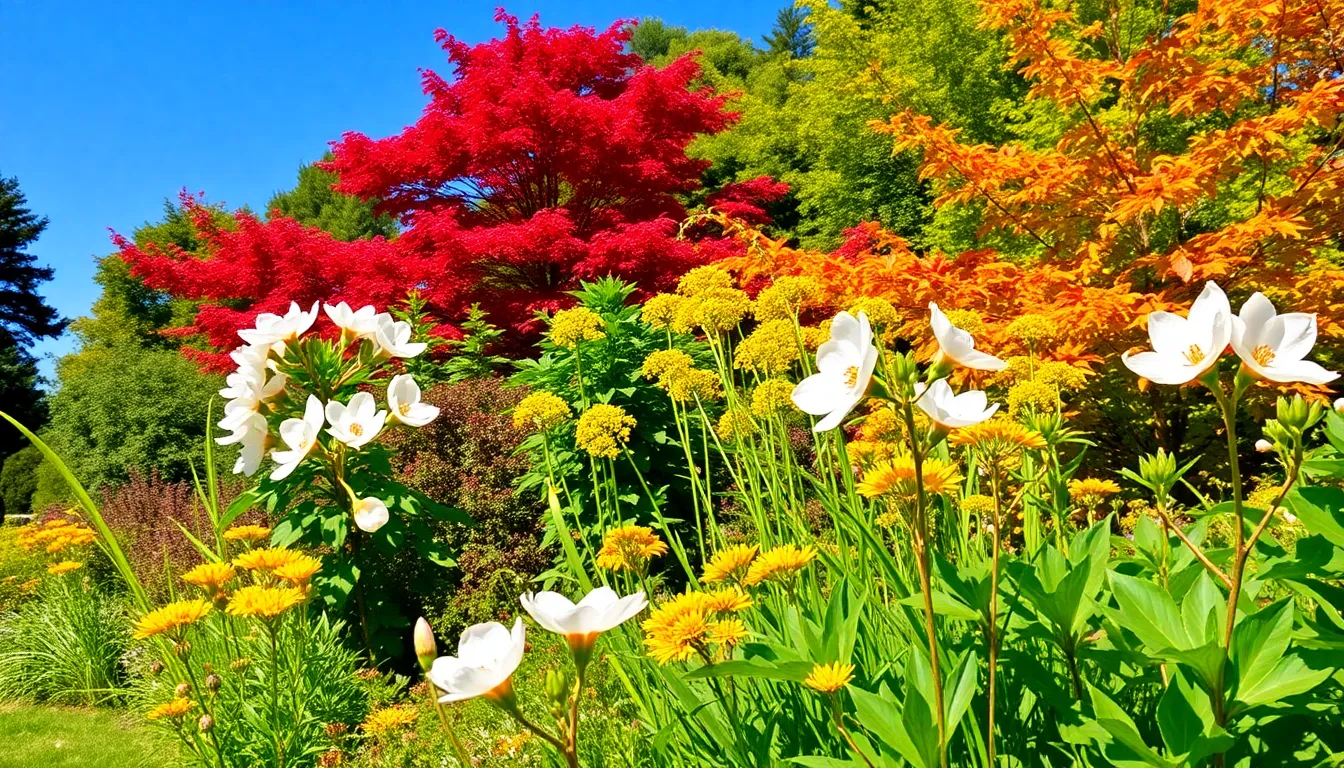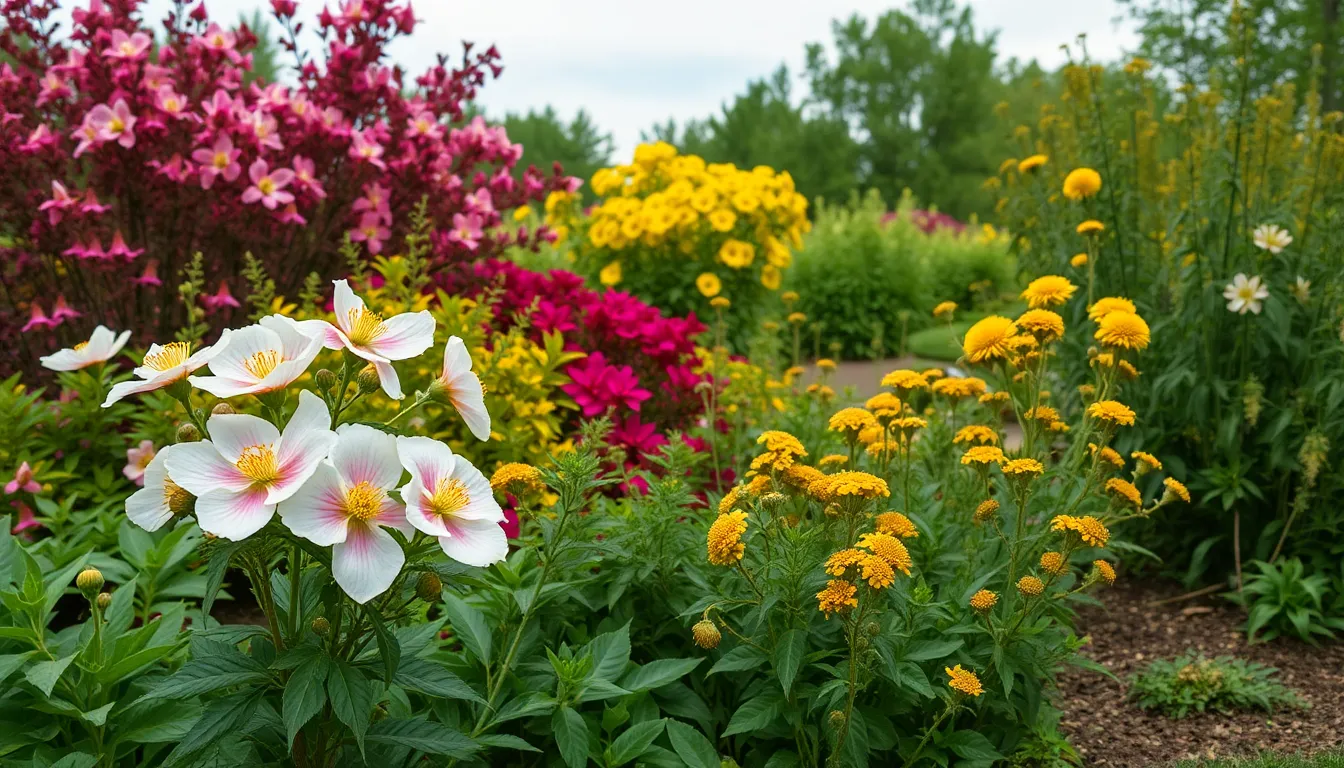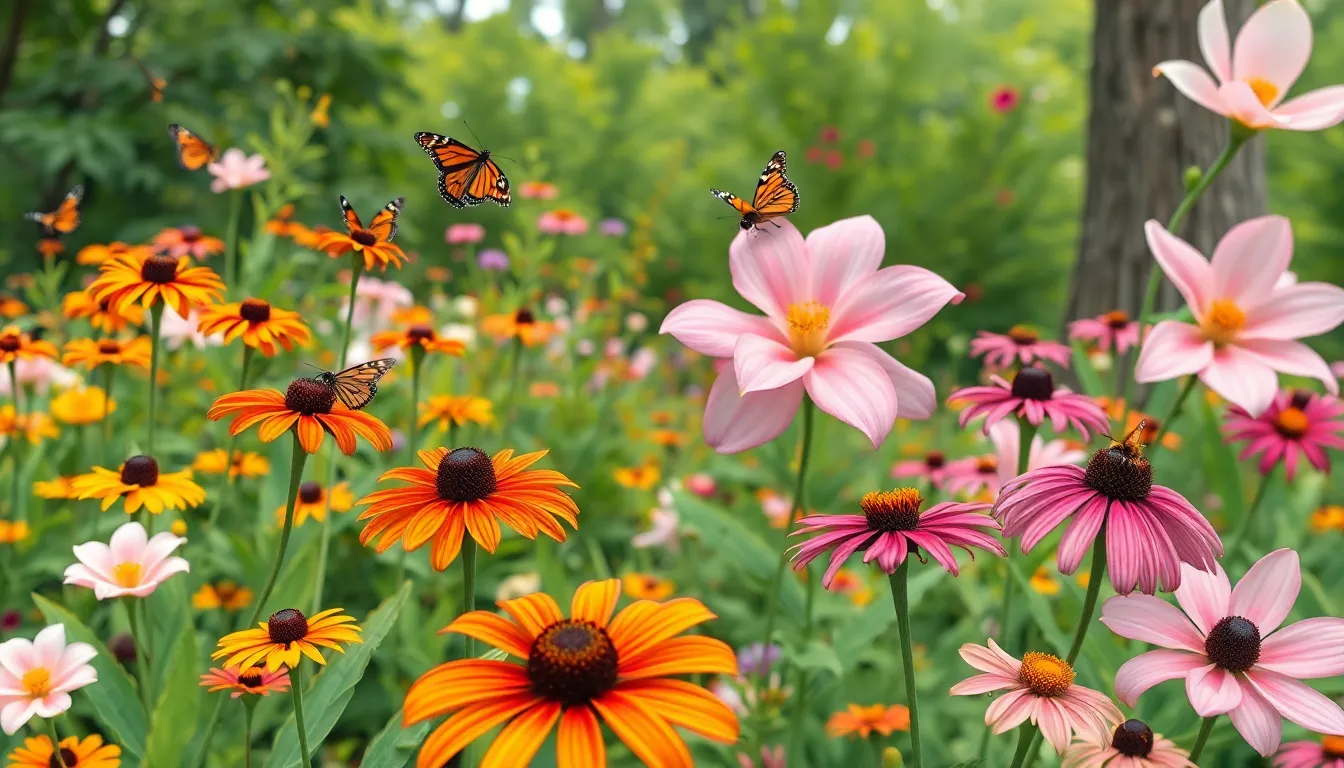Georgia’s landscape is a vibrant tapestry of native plants, each telling a story of resilience and beauty. From the majestic flowering dogwood to the charming Georgia aster, these plants are not just pretty faces; they play crucial roles in supporting local wildlife and maintaining ecological balance. Imagine strolling through a garden bursting with colors and scents that have thrived for centuries—sounds like paradise, right?
Native Georgia Plants
Georgia boasts a rich diversity of native plants, contributing significantly to the state’s ecological landscape. Flowering dogwood, known for its stunning blossoms, provides shelter and food for various bird species. Georgia aster thrives in open fields and attracts pollinators like bees and butterflies, essential for maintaining biodiversity.
Native plants in Georgia exhibit remarkable adaptability to varying climates and soil conditions. Lobelia, with its striking blue flowers, often grows near water sources, offering habitat for amphibians. Wild azalea displays vibrant flowers in spring, adding color while supporting local fauna.
The role of these plants extends beyond aesthetic appeal; they enhance soil stability and prevent erosion. Red maple thrives in wetlands, playing a critical role in water management and filtration. Southern magnolia, an iconic tree, boasts large fragrant blooms that attract pollinators during the summer months.
Grasses such as little bluestem and purple lovegrass provide ground cover and habitat for wildlife while contributing to the overall health of ecosystems. Each native species, from the smallest wildflower to the tallest tree, plays an essential role in the intricate web of life found in Georgia.
The significance of preserving native plants cannot be overstated. These species help maintain ecological balance while supporting local wildlife. Engaging in native plant gardening promotes the restoration of habitats and reduces reliance on non-native, invasive species.
Benefits of Native Georgia Plants

Native Georgia plants offer numerous benefits that contribute to the health of both the ecosystem and the landscape. Their resilience and adaptability enhance the local environment while providing aesthetic value.
Environmental Advantages
Environmental advantages of native Georgia plants include their role in supporting biodiversity and ecosystem stability. These plants attract a variety of pollinators, such as bees and butterflies, which are crucial for plant reproduction. They help improve soil quality by fostering beneficial microorganisms. Erosion control is another significant benefit; the deep roots of these plants prevent soil loss, especially in areas prone to flooding. Moreover, native species promote water conservation by requiring less irrigation once established. Finally, they resist pests and diseases better than non-native counterparts, reducing the need for chemical pesticides.
Aesthetic Appeal
Aesthetic appeal is evident in the striking beauty of native Georgia plants. Varied colors, shapes, and textures create vibrant landscapes that change with the seasons. The blooming dogwood and goldenrods provide stunning floral displays, while red maples offer impressive fall foliage. Native plants often thrive in local conditions, ensuring longevity and resilience. Landscapes featuring these plants can be tailored to reflect the region’s natural charm. Incorporating native plants can reduce landscaping maintenance, as many of these species need less care compared to traditional gardens. Overall, they contribute to a more harmonious, visually pleasing environment that resonates with the local ecosystem.
Common Native Plants in Georgia

Georgia’s diverse landscape boasts a variety of native plants, each playing a crucial role in the local ecosystem.
Trees and Shrubs
Flowering dogwood thrives in Georgia’s environment, showcasing white blooms in spring. Red maple, known for its stunning fall colors, provides habitat for birds and other wildlife. Southern magnolia adds beauty with its large, fragrant flowers and glossy leaves. Sweetbay magnolia, a less common but equally stunning tree, flourishes in wetland areas. Other notable shrubs include the Georgia aster, which attracts pollinators and adds vibrant color to gardens. These trees and shrubs adapt well to Georgia’s climate and contribute to soil stability.
Flowers and Groundcovers
Wild azalea, with its delicate blooms, enriches forest understories. Goldenrods flourish across meadows, attracting bees and butterflies. Butterfly weed serves as a host for monarch caterpillars and provides bright orange flowers. Little bluestem and purple lovegrass are essential groundcovers, enhancing soil health and preventing erosion. These plants thrive in varying soil types and provide ecosystem services, such as improving air quality and enhancing biodiversity. Incorporating these native flowers and groundcovers into gardens supports local wildlife and fosters a more resilient landscape.
How to Incorporate Native Plants in Your Garden
Incorporating native plants into gardens enhances beauty and supports local ecosystems. These plants thrive in their native environments, making them easier to maintain.
Planting Tips
Select the right location based on sunlight and moisture levels. Space the plants adequately to allow for growth and airflow. Choose a mix of native trees, shrubs, and flowering plants for diverse habitats. Consider planting in clusters for a more natural look and to attract pollinators. Implement companion planting to encourage growth and deter pests. Match plant heights and bloom times for visual interest throughout the seasons. Using organic mulch can help retain soil moisture and suppress weeds.
Maintenance and Care
Water plants deeply during dry spells to establish robust root systems. Regularly check for pests and diseases, taking action promptly to minimize damage. Prune when necessary to maintain shape and encourage floriferous growth. Fertilizer isn’t typically required, as native plants adapt well to local soils. Monitor for invasive species that may encroach on native plants. Allow natural leaf litter to accumulate, providing habitat for beneficial insects and improving soil health. Mulching once a year helps in moisture retention and weed prevention.
Resources for Learning More
Many resources exist for those wishing to delve deeper into native Georgia plants. Online databases offer extensive information. The Georgia Native Plant Society provides a wealth of knowledge about local flora, including guides for gardening and conservation efforts.
Books serve as excellent starting points. Titles like “The Plant Lover’s Guide to the Southeastern US” and “Native Plants of the Southeast” cover essential species and their ecological roles. Websites such as Georgia’s Department of Natural Resources list native plant resources tailored to regional climates.
Community organizations play an important part in education. Local conservation groups frequently host workshops and events. Attending these gatherings fosters a connection with fellow gardening enthusiasts while learning best practices for cultivating native species in Georgia.
Social media platforms also offer rich content. Groups dedicated to native gardening share experiences and insights. Following these communities can provide inspiration for landscape design and practical gardening tips.
Native plant nurseries provide firsthand experience. These establishments often have knowledgeable staff that can offer guidance on plant selection and care. Purchasing directly from these sources supports local ecosystems and encourages biodiversity.
University extension offices are other valuable resources. They provide research-based information and can answer specific gardening questions. Engaging with local university programs can help individuals understand native plants’ significance in maintaining Georgia’s ecological integrity.
Conclusion
Embracing native Georgia plants enriches both gardens and the environment. These resilient species not only enhance aesthetic appeal but also play vital roles in supporting local ecosystems. By choosing native plants, gardeners contribute to biodiversity and ecological health while creating vibrant outdoor spaces.
The journey into native plant gardening opens up opportunities for deeper connections with nature. It fosters appreciation for the unique beauty of Georgia’s flora and its role in sustaining wildlife. Through informed choices and community engagement, individuals can make a lasting impact on their landscapes and the environment.

